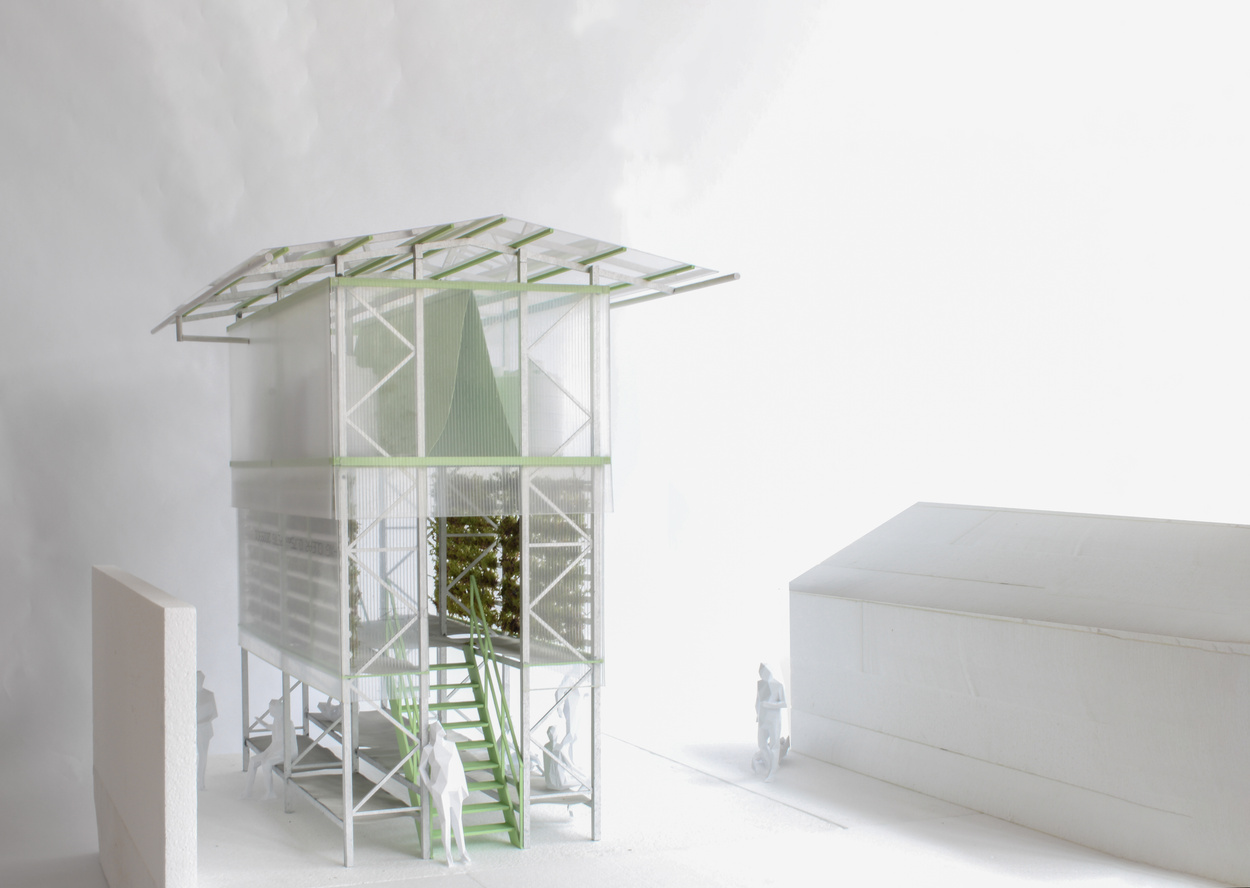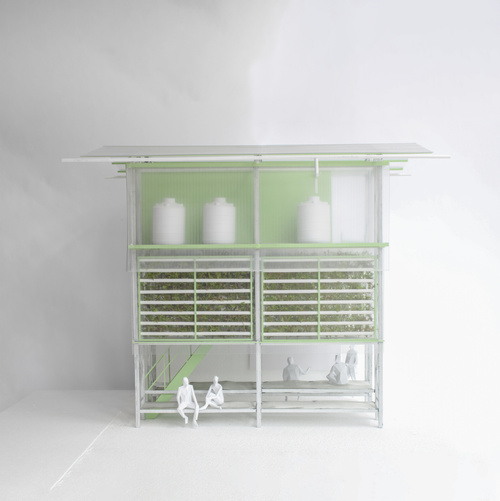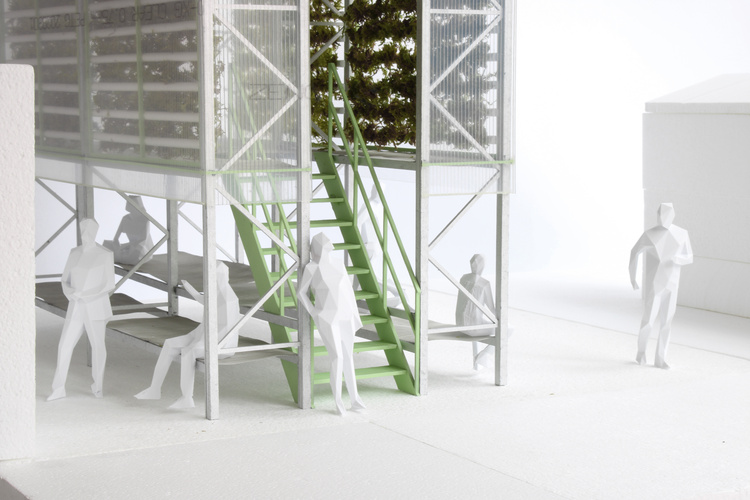






A Low-Tec Aquaponics Center







A Low-Tec Aquaponics Center
Design by: Alsar Atelier + Oscar Zamora + Yasmin Crespo
Client: Altos del Cabo + Maya Tejedores de la Tierra
Construction Year: September 2024
Location: Bogotá, Colombia Area: 23.4m2
The proposal enhances the community initiative of Maya Tejedoras de la Tierra by introducing a compact 6 x 3-meter hydroponic structure. This structure is designed to fit seamlessly into the front yards of typical empty lots found throughout the area, supporting hydroponic systems that can increase plant density by 2 to 10 times, save up to 60% of water, provide healthier food options, and allow planting in any climate or season.
The core of this initiative is the "Open Classroom," a radical architectural concept that serves as a new type of social infrastructure. It is built around three main principles: 1. Utilizing an industrial shelving system to maximize material storage and maintain an expansionist character, which is quick and reusable, diverging from the traditional use of concrete and brick in Colombia; 2. Adapting to the variable and temporary nature of informal city formations, influenced by occupation and permits, by selecting components like acrylic polycarbonate sheets that are easily accessible in Bogotá; 3. Designing the classroom so that it can be dismantled or relocated without generating waste, allowing the components to be reused or adapted to different sizes and capacities.
The Open Classroom functions as an analog school that supports the Center with community training through new hydroponic crop workshops and provides space for personal in-situ cultivation, sustainable water use, and collective post-harvest tasks. These activities foster practices of inclusion and self-management.
Additionally, the classroom enhances urban garden workshops and utilizes the Chapinero seed bank to safeguard 23 native and Creole species, including peppermint and sage. It also introduces the Maya 2023 Primer, focusing on the gastronomy and health of local gardens, and a participatory "Craft Primer" that serves as an alternative archive of community recipes and intergenerational stories.
Inspired by Arnstein's typology of citizen participation, which is visualized as a metaphorical "ladder" of increasing levels of agency, control, and power, the project incorporates a "Maya ladder." This ladder outlines seven levels of activity in the Open Classroom, ranging from low participation in assembling and disassembling, to high participation in cultivation workshops and crafting primers. This ladder is an inclusive visual tool that allows each citizen to engage at levels that match their availability and interest.
The "Maya ladder" is not just a tool but a pedagogical instrument embedded in critical design studies aimed at fostering "radical interdependence, autonomy, and world-making" (A. Escobar). It supports the cultivation of alternative designs for building food sovereignty through self-management, counter-methodologies, and decolonial practices.
The Open Classroom is a space to learn about food justice from within the community, making explicit the "situated knowledge" (D. Haraway) and aligning with environmental political ethics, epistemology, and citizen activism. This approach not only educates but also empowers, transforming the way communities interact with their environment and each other.
